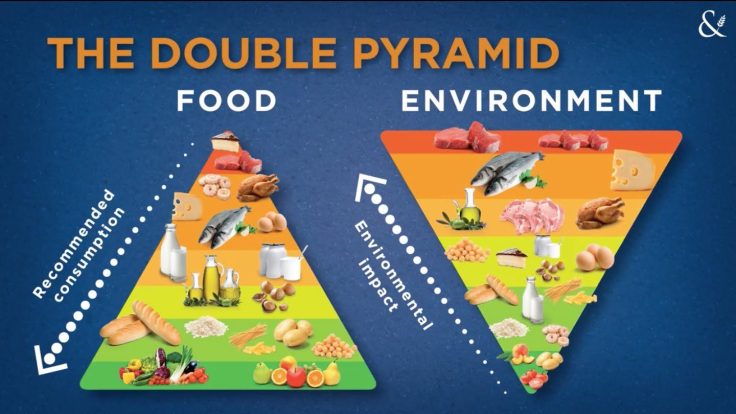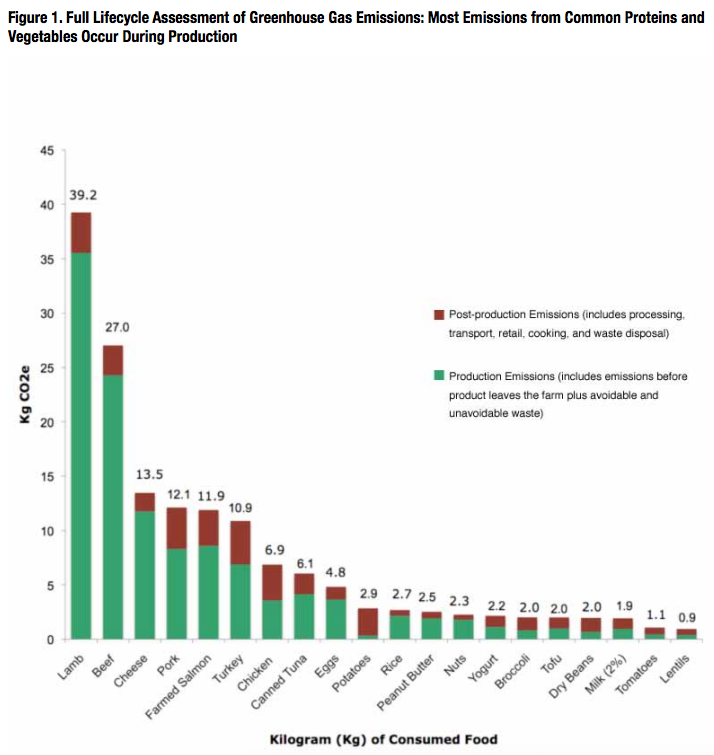Introduction
For my Special Topics International Relations class, I will be doing a simpler version of the No Impact Man to reduce my carbon footprint and help the environment. For this class, I will stop consuming meats like beef, pork, lamb, and fish but continue consuming chicken to reduce my carbon footprint. The purpose of this is to see how I reduce my carbon footprint throughout the semester by stop consuming these meats and learn about the impact the food I consume has on the environment.
My Consumption
In my house hold, we eat a lot of meat. I consume meat roughly twice a day almost everyday. My meat consumption is mainly because I do not pack my own lunch when going to college and because when buying food in fast food places their meals usually contain meat. In my house, the main meat that is consumed is beef and pork, chicken every once in a while and followed by lamb, rarely.
Meat and the environment
When it comes to agriculture, it is “one of the largest source of heat-trapping greenhouse gases such as methane and carbon dioxide” (Lewis). The main reasons these meats, beef, lamb, pork, farmed salmon have a high carbon footprint in due to the water consumption, land used, raising the animals, the transportation, the processing and the cooking that adds up and produces a lot of heat-trapping greenhouse gases.
In a report made by the Environmental Working Group and CleanMetrics Corp., called ” Meat Eater’s Guide to Climate Change + Health”, broke down different foods and their carbon footprint. According to the report, lamb is the highest carbon dioxide (CO2) produces with 39.2 kg CO2 per kilo. The reason is because 50 percent of it is imported into the United States. the lamb water foot print is 8763 liters per kilogram. The second highest CO2 producer is beef. Beef makes 27 kg CO2 per kilo. In order to produce the same greenhouse gases that 1 kilo of beef produces, one would need to drive roughly 63 miles! In addition, in another study made in 2011, it stated that “red meat required 28 times more land to produce than pork or chicken, 11 times more water” (Carrignton). The water footprint for beef is 15415 liters per kilogram.
Pork, is the third meat with the highest CO2 production. Pork produces 12.1 kg CO2 per kilo. The greenhouse gases that pork produces are mainly from how it is being raised and the transportation. The water footprint for pork is 5988 liters per kilogram. Another meat is farmed salmon which produces 11.9 kg of CO2.
I have decided to keep the consumption of chicken because it is produces the a much lower CO2 than the other red meats like beef, lamb, pork and farmed salmon. Chicken produces 6.9 kg CO2 per kilo. Chicken also has a water footprint of 4325 liters per kilogram. Since my life eating habits include eating meat almost every day this is a way for not abruptly stop eating meat, this is a good transition.
Conclusion
The CO2 animals produce not only arises from the animals itself by producing gases but also the way the animals are transported, feed, cooked and stored. All of these steps required movement or production of additional gases that are harmful for the environment. The environmental problem with food is complex because it starts with the way food for the animals are made all the way how the animals are cooked. Corn is produces which leads to pesticides and fertilizers being used. The environment the animals are raised and then to how they are killed and processed to go to the shops. All of these steps add gases produced by the animals (farts), the method of transportation, if the meat is being transported in a diesel truck and the miles it has to travel. In addition to the way it is stored in shops, the plastic containers they are out in and the number of miles consumers travel to the shops to purchase them. Lastly, the type of oven used to cook the meals. All of these add up and create harmful gases for the environment.
The following picture is a visual representation of the food pyramid and the environmental impact different foods have.

Sources:
http://www.greeneatz.com/foods-carbon-footprint.html
http://www.businessinsider.com/the-top-10-foods-with-the-biggest-environmental-footprint-2015-9

Leave a comment